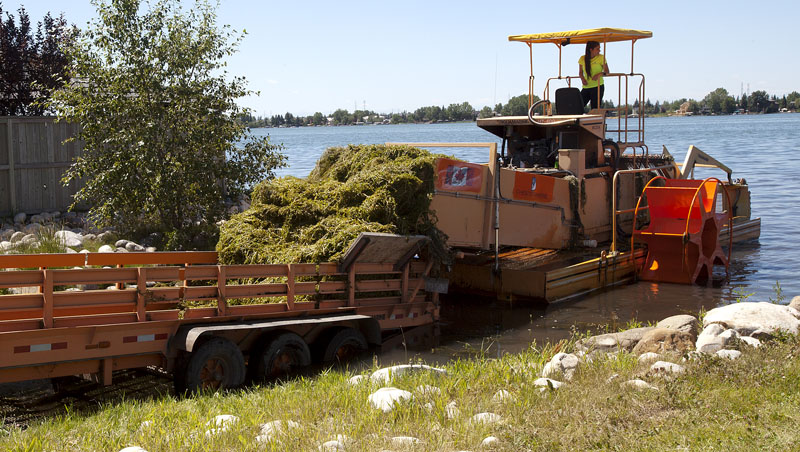Stantec Consulting Ltd. presented Chestermere City Council with multiple solutions to improve safety in the Highway 1 and Rainbow Road during the June 21 council meeting.
Council directed administration and Stantec to conduct the Traffic Impact Assessment after the barricades were removed on Rainbow Road to access Highway 1.
The results of the assessment indicated that the average diver would wait more than three minutes to turn left onto Highway 1.
Stantec reviewed the possibility of adding a traffic signal, however, Rainbow Road represented about two per cent of traffic, and Highway 1 represented the other 98 per cent.
“There’s no sense in interrupting 98 per cent of traffic to let 2 per cent in at this stage,” the Stantec representative said. “We still have delays, and concerns of some people trying to get across the highway.”
To justify a traffic signal, traffic along Highway 1 would have to double the traffic on Rainbow Road.
A traffic signal could be installed, however, infrastructure would need to be installed, with large cost implications.
“Signals along Highways are more of a provincial thing, they try to avoid them if they can,” the representative said.
If the city did choose to install a signal, Stantec recommended installing the signal on Range Road 284, as there is more traffic.
“It would serve a better purpose, have more benefits to drivers, and have a positive downstream impact as the light would provide gaps down at Rainbow Road,” the representative said.
Another safety option was eliminating the possibility of turning left onto Highway 1, by closing the median.
“It would improve safety monumentally, but it would lose full access to the intersection that would have an impact on users in the area,” the representative said.
Adding, traffic can use parallel routes Range Road 284 or Chestermere Bouvard, however, it could cause issues for businesses using the intersection on a regular basis.
Stantec also presented the possibility of adding a westbound inside merge lane, or an eastbound extended deceleration lane.
The northbound to westbound traffic would turn left, get into their own lane and merge to the appropriate speeds instead of trying to maintain speed.
“It’s a two phases approach,” the representative said. “This works well for north to westbound movement, but only that movement. It doesn’t improve the crossing of the eastbound lanes.”
A simplified option is to slow the speed on Highway 1.
“This maintains the operation and improves the safety of getting across the road and improving the severity of the accidents that might occur,” the representative said.
As part of the traffic assessment project, Stantec also conducted a safety analysis, where they found a large variance of speeds ranging from 40 km/h to 110 km/h.
Stantec believes the significant difference in speeds is due to the mix of roadway classifications and characteristics with a mix of urban and rural roadways, both gravel and paved, the report said.
“Based on traffic volumes on Rainbow Road and the gap availability along Highway 1, this intersection may be considered as a candidate of a speed zone with a lowered posted speed limit for its eastbound and westbound approaches,” the report said. “Although collision data was provided, the number of incidents were relatively low which did not identify any spatial, temporal or environmental trends.”
The implementation of the speed zone could include posted speed limit signs, speed ahead signs, reflective stop signs, retroreflective delineator posts, and street lighting.
“The option that presents the highest value and compromise between improved safety for the intersection, while maintaining effective intersection operations, would be the introduction of a speed reduction along Highway 1, reducing speeds from 110 km/h to 80 km/h,” the report said.
Decreasing the speed limit would increase traffic gaps to maneuver across eastbound and westbound Highway 1, increase drivers reaction time, maintain a continuous flow on Highway 1, and maintain all current access and turning operations.
Lowering the speed is the lowest cost option, and is also the traditional improvement strategy for safety concerns, the report added.
Council accepted the traffic assessment and safety analysis as information.








